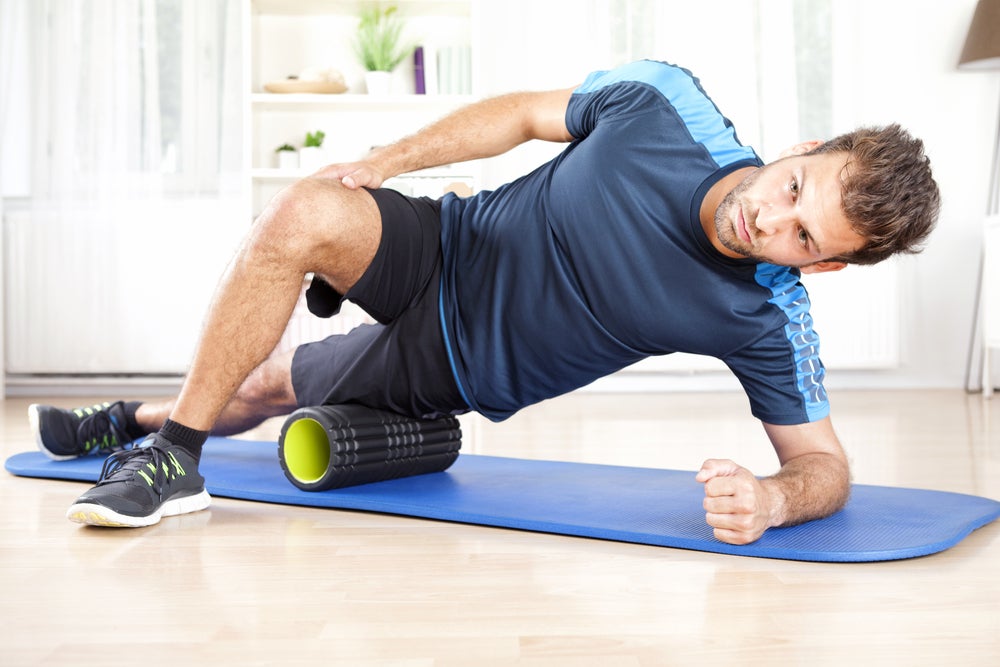How to Become Your Own Masseuse

Photo: Shutterstock.com
Although it is a popular and important tool for recovery, massage can quickly get prohibitively expensive. If you don’t have the luxury of regular massage, you can bridge the gap between sessions with some self-massage. Self-massage helps you release adhesions, knots, and trigger points in the soft tissues and is an important part of injury prevention. It is also a way to give yourself some assistance in stretches, by anchoring one end of a muscle against the ground, your hand, or a device while you stretch in the other direction.
USA Cycling soigneur Bernard Condevaux advises self-massage as well. “There’s an economic reality, and a lot of teams can’t afford soigneurs or individual massage,” he says. To get the most from your self-massage on a foam roller, he suggests, “Be aware of what you’re doing. Keep it moving. Roll toward your heart. If you find a spot that’s tight or tender, sit on it for 10 seconds. If it doesn’t back off, change the pressure. Mashing the muscle is not always the best thing. The target is flushing out, getting the muscle to recover, not beating it.”
Tools
Your hands are the simplest tool for self-massage. Reach into areas of the body that are hurting and see if you can feel what’s going on. Trace the muscle fibers to their origin and insertion points, along either end. Is there a particular sore spot or trigger point? How does it respond to pressure?
Applying cross-friction massage, against the grain of the muscle fibers, can help to release adhesions and scar tissue limiting your range of motion.
The Athlete’s Self-Massage Tool Kit
- Foam rollers can provide light or hard massage, depending on the hardness of the foam. These can be as simple as white Styrofoam roller or rigid rollers with foam nubs wrapped around a hard core.
- Beaded sticks (like “The Stick”) aren’t for everyone. The shape and material of the bead will affect your experience; if possible, try the stick before buying.
- Sports balls make useful, inexpensive devices. Tape two balls together to make a peanut shape to work the muscles on either side of the spine.
- Trigger Point Therapy makes a range of instruments to address most parts of an athlete’s body and they are pretty widely available at bike shops, race expos, and online.
Technique and Time
The general technique for using any of these implements is similar. Put the device on the floor, place your leg or arm or back on it, and apply pressure (or place a ball between your body and the wall, if you’re working your chest and back muscles). Once the pressure feels right, slowly travel along the muscle fibers a few times, pausing as you feel particular points of tightness or frission. In general, you will move from the periphery of the body toward the center. If it feels productive to travel back and forth along the muscle from end to end, that is fine, too.
You can work the whole body or just problem areas. A few passes over each muscle or area should do. If your muscles are already inflamed or overtired, overdoing your self-massage will simply aggravate the condition and prevent your recovery—yielding a result opposite from what you intended. Bigger muscle groups can probably take more pressure than smaller groups. Let your body be your guide.
How often you do self-massage depends on your time, schedule, and needs. It might become a nightly habit, part of your downtime ritual. Or maybe you take care to do your self-massage on the days when you run long or hard—or just on the days when you run, if you are a multisport athlete. Experiment to find what works best for you.
Common Problem Areas
[velopress cta=”See more!” align=”center” title=”More from the Book”]